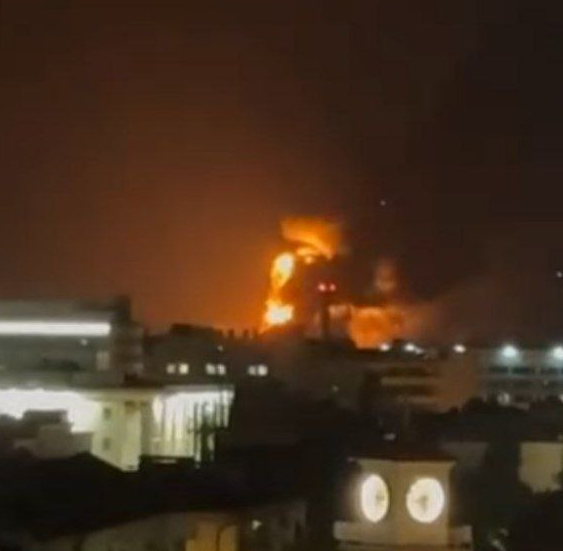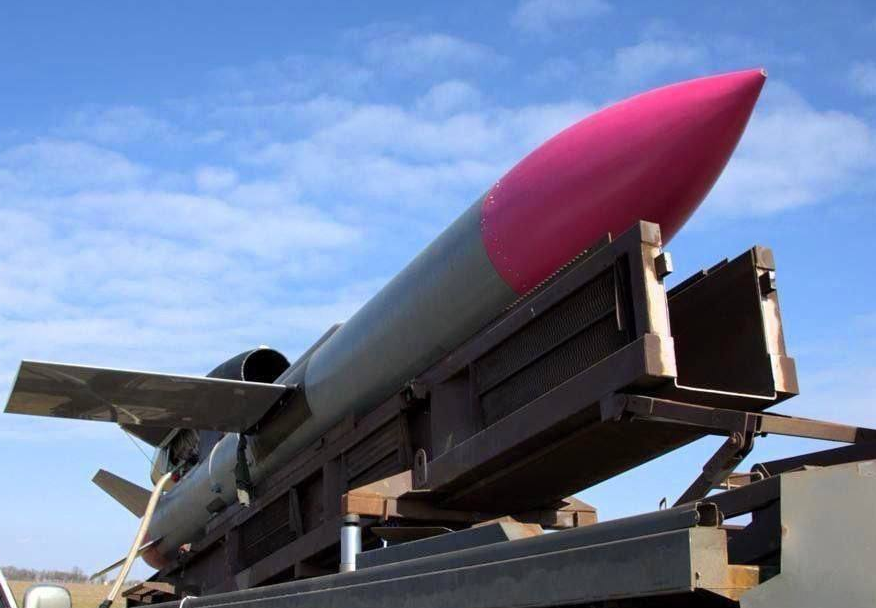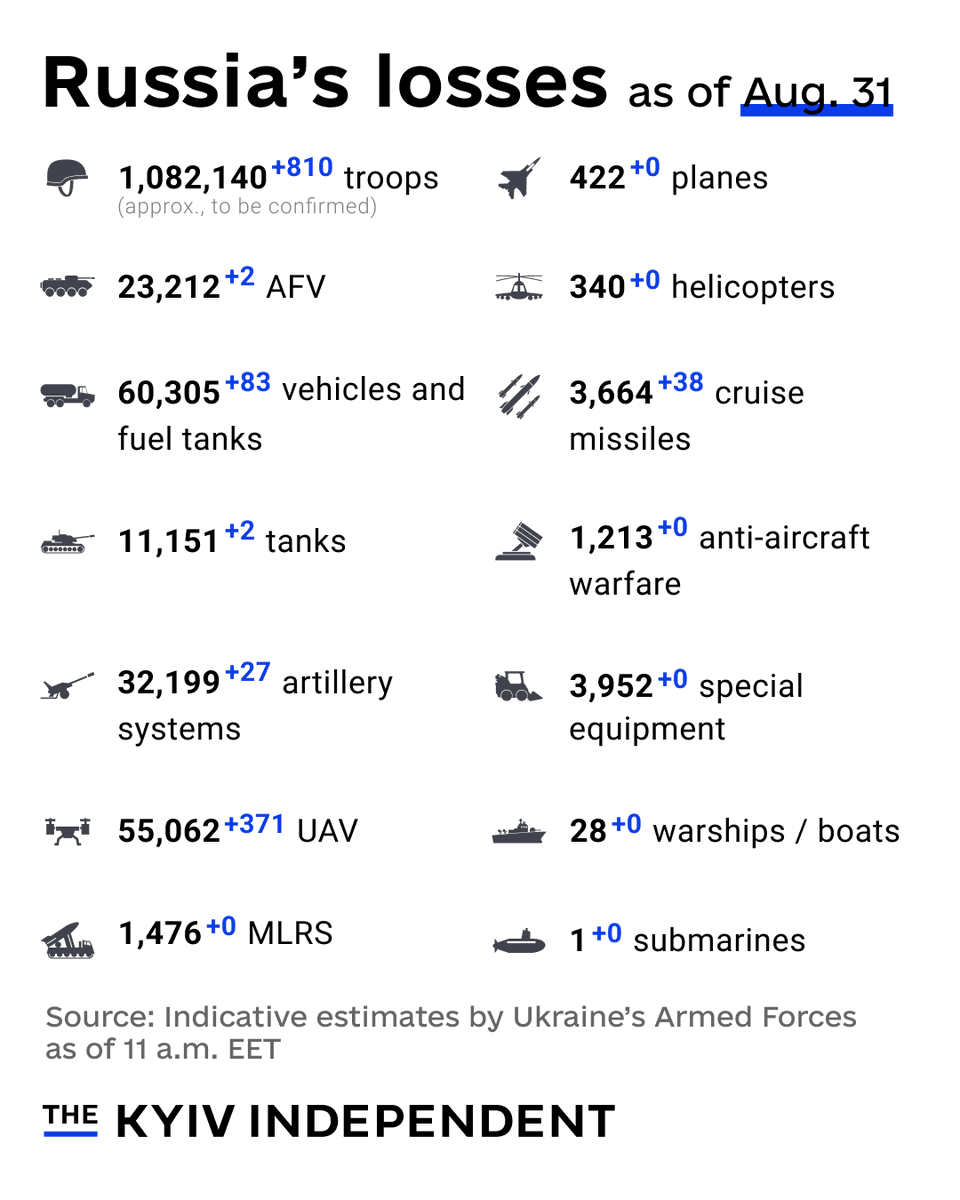https://x.com/Heroiam_Slava/status/1961663043143704596

Posted on 02/24/2024 5:59:01 AM PST by SpeedyInTexas
The moment of the murder of Andriy Parubiy in Lviv, — local media.
https://bsky.app/profile/maks23.bsky.social/post/3lxmg3525ys2e
The National Police said that around noon there was a report of a shooting in the Frankivsk district of Lviv. As a result of his injuries, the victim died on the spot.
The head of the Lviv Regional Military Administration, Maksym Kozytskyi, said on Telegram that the shooter was being sought, for this purpose all relevant services were involved.
According to Suspilne’s sources, the attacker who fired was dressed as a courier of the delivery service. According to sources, he used an e-bike. The attacker approached Parubiy and shot him eight times, after which he left the scene of the crime. Law enforcement officers found seven shell casings at the murder scene, the source said.
In the video of the moment of the murder, which spread on social networks, you can see that an unknown person, dressed in dark clothes, with a protective helmet on his head and a yellow backpack in his hand, was waiting for Andriy Parubiy at the edge of the sidewalk. When the politician passed him, the attacker followed him and shot him several times in the back, after which he fled.
Who was Andriy Parubiy
Andriy Parubiy is a Ukrainian politician and statesman. He was born on January 31, 1971 in Sheptytsky (then Chervonograd), in the Lviv region. In 1994, Parubiy graduated from the Faculty of History of Lviv University, in 2001 he completed his postgraduate studies at Lviv Polytechnic. Back in the late 80s, Andriy Parubiy became one of the leaders of the nationalist organization “Heritage”, participated in pickets. In 1990, Parubiy became a deputy of the Lviv Regional Council.
In 1991, Andriy Parubiy, together with Oleh Tyahnybok, founded the Social National Party of Ukraine (SNPU), later renamed the All-Ukrainian Union “Svoboda”. From 1994 to 1998 he was a deputy of the Lviv City Council. In 2004, Andriy Parubiy took part in the Orange Revolution, was the commandant of the Ukrainian House, where the headquarters of the protest forces was located; in 2013-2014, he was a participant in the Revolution of Dignity, the commandant of the tent camp and the head of the Maidan Self-Defense. After Viktor Yanukovych fled Ukraine at the end of February 2014, by decree of Acting President Oleksandr Turchynov, he headed the National Security and Defense Council. On August 7 of the same year, he resigned. Soon Andriy Parubiy left the All-Ukrainian Union “Batkivshchyna” and moved to the newly created “People's Front”, among the founders of which were many ex-members of “Batkivshchyna”. In December 2014, he took the post of deputy chairman of the Verkhovna Rada, which at that time was Volodymyr Groysman. After the appointment of Groysman as Prime Minister from April 14, 2016 to August 28, 2019, Parubiy headed the Ukrainian parliament.
Andriy Parubiy was a deputy of the Verkhovna Rada of four convocations — from 2007 to 2012 from the pro-presidential bloc “Our Ukraine — People's Self-Defense”, from 2012 to 2014 — from Yulia Tymoshenko’s “Batkivshchyna” party, in 2014-2014 — from the “People's Front” party led by Arseniy Yatsenyuk and from 2019 until his death — from the “European Solidarity” of the fifth president Petro Poroshenko.
Andriy Parubiy is survived by his wife and daughter.
https://suspilne.media/lviv/1102956-u-lvovi-vbili-andria-parubia/
📍 In Russia, there is not only a Unified Energy System that connects all large power plants into a single network, but also the vast majority of the power industry has an even more centralized supply of fuel - natural gas.
https://x.com/Heroiam_Slava/status/1961423389446340983
Opportunity to operationally test some of these:

▪️ 20 tanks
▪️ 41 Armored Fighting Vehicles
▪️ 94 artillery systems and MLRS
▪️ 16 air defense systems
▪️ 8 EW/radars
▪️ 764 vehicles
▪️ 107 UAVs and 317 communication antennas
▪️ 983 enemy positions and fortifications
▪️ 32 ammunition depots and 7 fuel and lubricant depots
https://x.com/front_ukrainian/status/1961736010917634112
Falling debris 😂
Never rule out drunken incompetence.
“Opportunity to operationally test some of these” (Flamingo missiles on the oil pipeline infrastructure)
Maybe waiting for the freeze, for the secondary damage effects. Nights start freezing around 21 September in Urengoy.
“Russian refineries want protection from enemy strikes with the help of religious processions”
The new Point Of Contact for all you REMFs seeking Air Defense, is the Chaplain.
Thank you for your attention to this matter.
Radioactive shrimp on the US market - maybe an indicator of damage at Russia’s Rybachiy Submarine base after the recent huge earthquake and tsunami.
https://freerepublic.com/focus/f-news/4337680/posts
Contaminated with Cesium-137, an entirely manmade isotope, most commonly associated with nuclear reactors and nuclear weapons.
Nothing to do with the Russians - its used in processing and the equipment sprung a leak - read that here I think or over there perhaps.
And smoking😂
I think they already tried that, Gott mit Uns, isn’t working
Following up on the sale of thousands of Air Launched Cruise Missiles, we announced the potential sale of $180M for Patriot sustainment and $150M in Satellite Communications services, apparently by StarLink. We really need a couple more assembly lines for Patriot. For the next 10 years, we will be able to sell double or triple what we currently make.
“its used in processing and the equipment sprung a leak” (Cesium-137 contamination in shrimp)
That is quite plausible - food processing often uses irradiation to sterilize the products, and that requires a radiation source, like Cesium-137.
“and $150M in Satellite Communications services, apparently by StarLink.”
Yes, I saw another report that specified it was for Starlink. Perhaps because Poland’s new President, Karol Nawrocki, recently vetoed the budget authorization for a bunch of services to Ukrainian refugees within Poland, that also included the funding for Ukrainian Starlink subscriptions that Poland had been paying for - $150 million worth.
Totally agree about PATRIOT. They are backlogged for years with orders, and it would be good to have wartime surge capacity.
The Kremlin appears to have launched a coordinated informational effort posturing military strength on the battlefield in order to shape Western thinking and falsely portray a Russian victory as inevitable. Russian Chief of the General Staff Army General Valery Gerasimov claimed on August 30 that Russian forces have seized 3,500 square kilometers of territory and 149 settlements since March 2025.[1] Gerasimov claimed that Russian forces seized 210 square kilometers and 13 settlements just in northern Sumy Oblast — likely also since March 2025. Gerasimov claimed that Russian forces occupy 99.7 percent of Luhansk Oblast, 79 percent of Donetsk Oblast, 76 percent of Kherson Oblast, and 74 percent of Zaporizhia Oblast. Gerasimov additionally claimed that Russian forces have seized roughly 50 percent of Kupyansk and seized 10 settlements in the Lyman direction since March 2025: Myrne, Katerynivka, Novomykhailivka, Nove, Lypove, Ridkodub, Hrekivka, Zelena Dolyna, Kolodyazi, and Serednie.[2] Gerasimov claimed that Russian forces seized five settlements in the Velykomykhailivka direction since March 2025: Maliivka, Novoheorhiivka, Vorone, Sichneve, and Zaporizske.
ISW assesses that Gerasimov is inflating most of his claims. ISW has observed evidence to assess that Russian forces have gained only roughly 2,346 square kilometers of Ukrainian territory and seized 130 settlements since March 1. Gerasimov’s claims notably inflate Russian gains by roughly 1,200 square kilometers and 19 settlements. ISW assesses that Russian forces gained 212 square kilometers in northern Sumy Oblast, but only occupy nine settlements in northern Sumy Oblast. ISW assesses that Russian forces occupy roughly 99.7 percent of Luhansk Oblast, 76.7 percent of Donetsk Oblast, 73.2 percent of Kherson Oblast, and 73 percent of Zaporizhia Oblast. ISW assesses that Russian forces have only seized 6.3 percent of Kupyansk and that Russian forces have not seized all of Myrne, Novomykhailivka, Ridkodub, Hrekivka, Kolodyazi, Serednie, Vorone, Sichneve, or Komyshuvakha. Gerasimov is not the first senior Russian military official in recent days to make aggrandized claims of Russian advances. Russian Defense Minister Andrei Belousov similarly claimed on August 29 that Russian forces are currently seizing 600 to 700 square kilometers per month, but ISW assesses that Russian forces advanced only 440 to 500 kilometers per month in June, July, and August 2025.[3] The Kremlin is likely attempting to influence Western policymaking by creating the false impression that Russian advances and victory are inevitable. The Kremlin appears to be trying to use large amounts of quantitative data to create the false impression that Russian forces are advancing at a fast rate on the battlefield. The Kremlin is trying to convince the West that Russia will inevitably achieve its war goals on the battlefield, such that Ukraine should concede to Russian demands and the West should therefore cease its support of Ukraine.
The Kremlin's presentation of territorial gains statistics ignores the significant losses that Russia is incurring and the gradual, creeping nature of Russia's advances — painting an incomplete picture of Russian performance on the battlefield. Russian opposition outlets Meduza and Mediazona reported on August 29 that data from the Russian Register of Inheritance Cases (RND) suggests that at least 93,000 Russian military personnel died in 2024 — almost twice as many as in 2023 (about 50,000).[4] The outlets used a predictive model to estimate that at least 56,000 Russian soldiers had died since the start of 2025. The outlets caveated that the RND data is imperfect for assessing Russian losses as relatives of deceased have at least 180 days to open an inheritance case for dead or presumed-dead Russian soldiers, so the last six months’ worth of data (since about February 2025) is significantly incomplete. The outlets stated that the number of inheritance cases rose to 2,000 per week by mid-2025. There was a sharp increase in the second half of 2024 of Russian court cases recognizing missing persons as dead (including but not limited to missing in action [MIA] Russian soldiers whom the court deemed killed in action [KIA]). The outlets found that there was only an increase of cases involving missing persons in the RND since mid-2024 among men — not women — a phenomenon that the outlets stated can only be consistent with an increase in fatality rates in the war.
Russian forces have been suffering from especially high casualties since Winter 2024, and these losses have come at disproportionately small territorial gains.[5] ISW continues to assess that Russia's high losses are unsustainable in the medium- to long-term.[6] Russia's gains have been largely gradual and creeping for many months, and Russia's rate of advance is incredibly slow under the norms of modern mechanized warfare. Russian forces have been using light motorized vehicles (such as buggies, ATVs, and motorcycles) and infiltration tactics to make gains across the front, but Russia's rate of advance has yet to increase beyond a foot pace.[7] Russian forces have also not been able to consolidate and exploit their infiltrations, such as the recent penetration east and northeast of Dobropillya.[8] Any assessment of Russia's battlefield performance and strength must examine both the tempo of advance and the resulting losses to make those gains. The Kremlin's presentation of likely inflated territorial gain statistics without critical context for the losses for those gains is likely an attempt to manipulate perceptions about Russia's military performance and buttress a longstanding Kremlin narrative that Russia's victory on the battlefield is inevitable. It is not.
Russia launched another large-scale combined drone and missile strike against Ukraine on the night of August 29 to 30 — the third combined strike with over 500 drones and missiles since the August 15 US-Russia summit in Alaska. The Ukrainian Air Force reported that Russian forces launched eight Iskander-M/KN-23 ballistic missiles from Rostov Oblast and Krasnodar Krai and 37 Kh-101, Kalibr, Iskander-K, and Kh-59 cruise missiles from over Saratov Oblast, the Black Sea, and occupied Zaporizhia Oblast.[9] The Ukrainian Air Force reported that Russian forces also launched 537 Shahed-type and decoy drones from the directions of Kursk, Bryansk, and Oryol cities; Millerovo, Rostov Oblast; Shatlovo, Smolensk Oblast; and Primorsko-Akhtarsk, Krasnodar Krai. The Ukrainian Air Force reported that Ukrainian air defenses downed 510 drones; six Iskander-M/KN-23 ballistic missiles; and 32 Kh-101, Kalibr, Iskander-K, and Kh-59 cruise missiles. The Ukrainian Air Force reported that five missiles and 24 drones struck seven locations throughout Ukraine and that drone debris fell on 21 locations. Ukrainian President Volodymyr Zelensky reported that Russian forces struck a residential building in Zaporizhzhia City, killing at least one civilian and injuring dozens.[10] Zelensky reported that Russian drones and missiles struck primarily civilian infrastructure in Volyn, Donetsk, Dnipropetrovsk, Zhytomyr, Zaporizhia, Ivano-Frankivsk, Kyiv, Rivne, Sumy, Kharkiv, Khmelnytskyi, Cherkasy, Chernihiv, and Chernivtsi oblasts. Kyiv Oblast Military Head Mykola Kalashnyk reported that the Russian strike on Kyiv City lasted 10 hours and damaged civilian and energy infrastructure.[11] Ukrainian broadcaster Suspline reported that the strike damaged civilian infrastructure in Dnipro City.[12] ISW continues to assess that Russia used the lead-up to the August 15 Alaska summit to stockpile drones and missiles and conducted more limited strikes against Ukraine to falsely present itself as a good-faith negotiator to the US administration.[13] Russia will likely escalate its strikes against Ukraine in the coming weeks to leverage its replenished missile and drone stockpiles and degrade Ukrainian energy infrastructure ahead of the coming winter.[14]
 >
>
The Kremlin appears to be setting conditions to demote a senior Kremlin official who reportedly advised Russian President Vladimir Putin in recent months to end the war in Ukraine. Putin signed a decree on August 29 abolishing the Presidential Administration's Department for Interregional and Cultural Relations with Foreign Countries and Department for Cross-Border Cooperation, instead creating the Department for Strategic Cooperation.[15] Kremlin Presidential Administration Deputy Head Dmitry Kozak supervised both these departments prior to their dissolution. Russian outlet Vedomosti reported on August 29, citing two sources close to the Presidential Administration and another source in the office of the Presidential Plenipotentiary Representative in the Northwestern Federal Okrug, that Kozak is a candidate to become the Presidential Plenipotentiary Representative in the Northwestern Federal Okrug.[16] Two additional sources indicated to Vedomosti that there are discussions within the Kremlin about Kozak’s resignation from his Presidential Administration post — effectively pushing Kozak out of the Kremlin and Putin's inner circle. The New York Times (NYT) reported on August 10 that Western and Russian sources indicated that Kozak lost his influence in the Kremlin after he advised Putin in the past few months to immediately stop fighting in Ukraine, start peace negotiations, and reduce the power of Russia's security services.[17] Kozak had been one of Putin's closest advisors and oversaw Kremlin strategy in Ukraine and Moldova before the Kremlin shifted this responsibility to Presidential Administration Deputy Head Sergei Kiriyenko after February 2022.[18] Reports indicating that the Kremlin is preparing to push an established senior Kremlin official from his position after expressing a desire to end the war in Ukraine are further indicators that the Kremlin has no plans to end the war, as Russian Foreign Minister Sergey Lavrov has explicitly stated since the August 15 Alaska summit.[19]
Ukrainian forces continue to strike Russian military and energy infrastructure in Russia. The Ukrainian General Staff reported on August 30 that Ukrainian elements, including from the Unmanned Systems Forces (USF) and Special Operations Forces (SSO), conducted drone strikes against the Syzran Oil Refinery in Samara Oblast and the Krasnodar Oil Refinery in Krasnodar Krai overnight.[20] The Ukrainian General Staff reported that the Syzran Refinery can produce 8.5 million tons of gasoline, diesel fuel, jet fuel, fuel oil, and bitumen per year and that the Krasnodar Refinery can produce three million tons of gasoline, diesel, and jet fuel per year. The General Staff reported that there was a fire at the Syzran Refinery and numerous explosions at the Krasnodar Refinery. Geolocated footage published on August 29 shows a fire at Krasnodar Refinery.[21] Geolocated footage published on August 30 shows a fire at Syzran Refinery.[22] The Krasnodar Krai Operation Headquarters claimed on August 30 that drone debris damaged a processing unit at Krasnodar Refinery and caused a 300-square meter fire at the enterprise.[23] ISW continues to assess that Ukraine's strike campaign against Ukrainian energy infrastructure is impacting Russia's domestic gasoline market, exacerbating shortages and causing price spikes that will likely push inflation upwards and create further macroeconomic instability in Russia.[24]
A Ukrainian Main Military Intelligence Directorate (GUR) source reported to Ukrainian broadcaster Suspilne on August 30 that the GUR destroyed a Russian explosives warehouse in Tula Oblast near the Aleksinsky Chemical Plant, which produces pyroxylin powder for small arms ammunition, artillery systems, and rocket engines.[25]
https://www.understandingwar.org/backgrounder/russian-offensive-campaign-assessment-august-30-2025

Surprised”. The government clarified information about the introduction of food cards in Russia
Our publication that food cards may be introduced for the most vulnerable categories of Russians in the fall, caused a rather heated discussion and even distrust. Which surprised the government representatives who gave us this information. “Food cards are a completely normal practice in the face of economic difficulties. We are not transferring Russia to a rationing system, there is no question of any shortage! We just want to help vulnerable categories of citizens. Do they die of hunger due to the fact that prices will rise, and someone simply does not like the words “food cards?” - one of the sources was indignant.
“We are surprised by the reaction to the plans for food cards. This is a normal practice in difficult times,” said another source in the government. At the same time, he noted that the decision on the cards has not yet been made. Vladimir Putin is now thinking about it.
Disclaimer: Opinions posted on Free Republic are those of the individual posters and do not necessarily represent the opinion of Free Republic or its management. All materials posted herein are protected by copyright law and the exemption for fair use of copyrighted works.